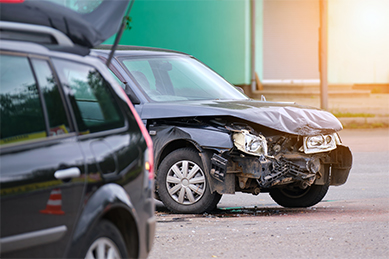The advent of the cellular phone has not only changed how we communicate with others, but also the frequency at which we do so. The development of smartphones such as the iPhone has further revolutionized how we stay in touch with friends, family, and co-workers. We are now able to talk, text, e-mail, and surf the web at will from almost any location in the world, a feat that would have been considered unimaginable even 20 years ago.
While such technological advances have undoubtedly made our lives much easier, they come with a set of responsibilities that users must abide by when utilizing such products; failure to follow such responsibilities puts the safety and well-being of others at risk. Perhaps the most obvious of these responsibilities is the operation of a cellular phone while driving. Although recent innovations, such as hands-free dialing, have shown some efficacy in reducing the number of car crashes associated with talking on the phone, these are not catch-all solutions that completely prevent accidents.
Furthermore, the increased prevalence of texting and driving, especially among teenage drivers, has been proven to be very difficult to regulate and prevent. Texting and driving accounts for almost 25% of all car accidents, and is nearly six times as likely to result in an accident as drinking and driving. The Insurance Institute for Highway Safety reports than 11 teens die every day in the USA from texting and driving.
Despite these statistics, just under 80% on young adults claim to be somewhat or very confident in their ability to text while driving, and 34% of them continue to regularly text while driving. In 2013, the “Florida Ban on Texting While Driving Law” was put into effect in order to discourage texting while driving. However, Florida is one of only five states that consider texting and driving to be a secondary offense, rather than a primary.
This means that in order for an officer to give a citation for texting and driving, one must commit another traffic violation first (such as not wearing a seatbelt or speeding). This has resulted in fewer than 400 texting-and-driving citations in the Orlando area since the law’s inception. While many lawmakers who feel the existing law is not strong enough have sought to pass bills that make texting and driving a primary offense in Florida, none of these bills have been able to pass.
Nonetheless, there are some easy tips you can follow to discourage and prevent your teenage driver from texting and driving:
- Set a good example – nearly half of all 12-17 year olds have been in a car while the driver was texting. Participating in such behavior demonstrates to younger generations that texting and driving is a normal part of life and poses minimal risks. Serving as a positive role model and leading by example are the most effective ways in ensuring that younger drivers do not use their phones while driving.
- In-Vehicle Cameras – parents can use these to monitor the activity of their young drivers. While this is an accurate way of gauging if your young driver is participating in reckless behaviors, this might also demonstrate a lack of trust.
- Anti-Texting Apps – several phone providers, such as AT&T and Verizon, have developed apps to prevent texting while driving. Check with your cell phone provider to see if any apps are available and ensure that one is properly installed on your child’s phone.
If you or any of your loved ones have been involved in a car accident resulting from talking or texting while driving, it is imperative that you have a qualified attorney on your side. Contact the Orlando personal injury lawyers at Todd Miner for further information.








